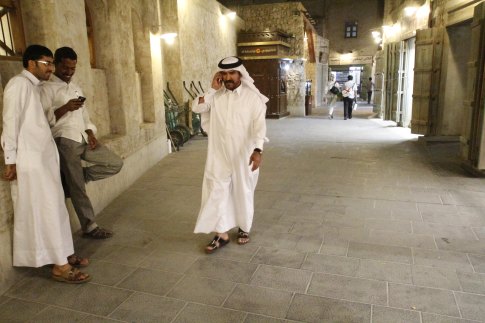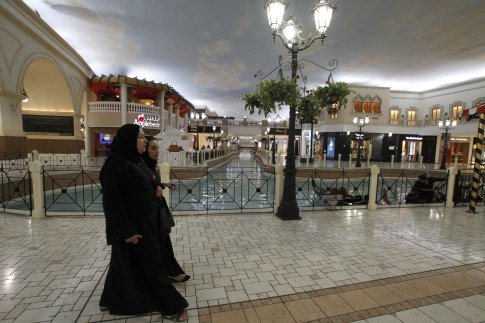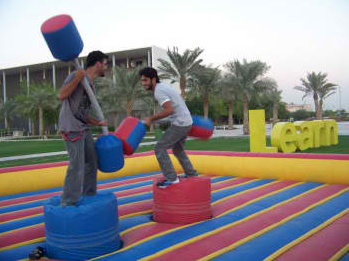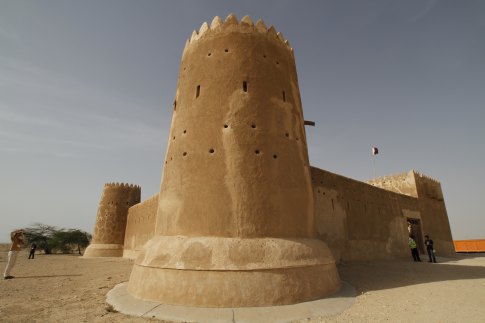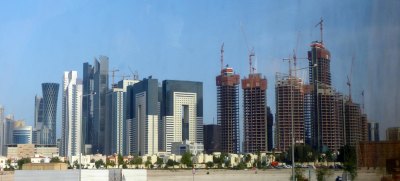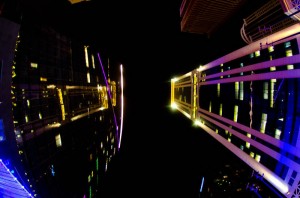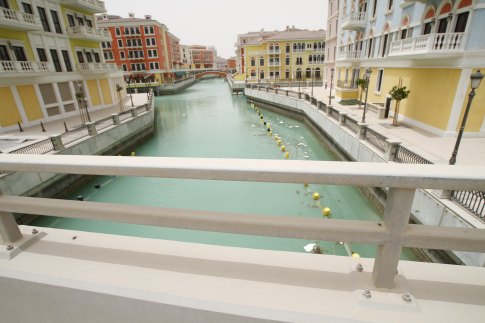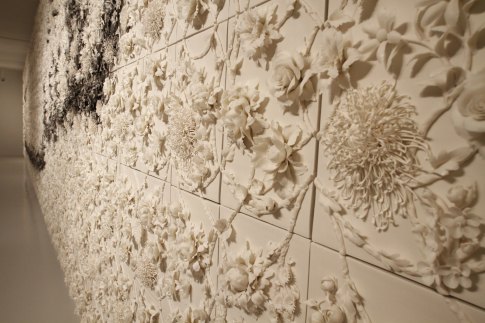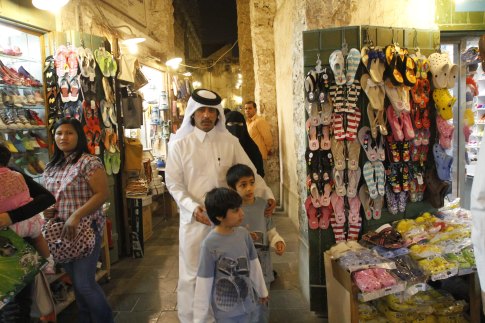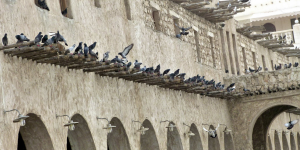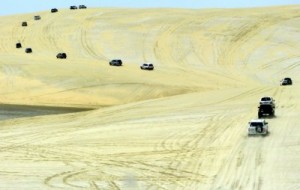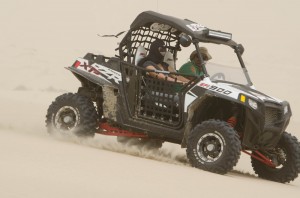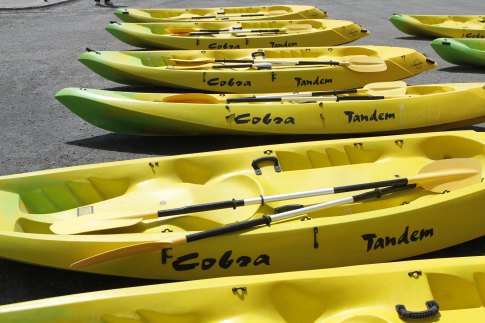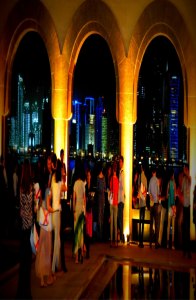 After nearly 80 countries, there are few places I travel to that surprise me anymore. I just returned from Qatar, a country that juts out into the Gulf and borders both United Arab Emirates and Saudi Arabia.
After nearly 80 countries, there are few places I travel to that surprise me anymore. I just returned from Qatar, a country that juts out into the Gulf and borders both United Arab Emirates and Saudi Arabia.
I found myself shaking my head in disbelief over a myriad of ‘creations and development on top of other creations and developments’ that didn’t make a whole lotta sense, at least not on the surface.
While Qatar’s written history actually begins as far back as the 5th-century, claiming the seafaring Canaanites as the original Qatar inhabitants, it’s almost as if the place remained one massive flat dune-bed until 50 or so years ago.
More desert, mosques and malls than a rich history of cities, towns and bustling culture, it felt absent of “real locals.” As one guide book described it, which is pretty much how I felt, “take the history of the Bedouin, who traverse a land ‘taking only memories,’ and leaving only footprints, footprints that are dusted away by frequent sandstorms. As such, history in Qatar is easier to spot in the living rather than the dead.” 
Bear in mind that I was visiting the country for an International Summit, so my first few days were full of meetings within the confines of the Katara Cultural Village.
While this pretty man-made ‘village’ by the harbor is surrounded by an ampitheatre for music and theater performances and conferences, its ideology claim is much loftier.
You’ve gotta love their mission statement: “this village shall be a glimpse of the future of a world where people of different cultural backgrounds overcome their national boundaries and embrace common causes to promote a united humanity.”
Following sessions at Katara and after-hour pow-wows and parties at the W and Kempinski Hotels, both designed to cater to wealthy westerners and tourists from the surrounding area, I found myself wondering, “Where are all the Qatari’s?” I couldn’t find them working in the hotels, the restaurants, the cafes, the cultural center or driving taxis. The taxi drivers all seemed to be from somewhere else (Lebanon, Jordan, Oman, India, Pakistan, the list went on….) and many of them were so new to the city that you may find yourself discovering Doha together.
A few other oddities. Qatar is apparently the wealthiest country per capita even though it is one of the most sparsely populated countries in the Arab world. Check out what Economy Watch has to say about their economic growth, which also includes interesting stats on their lifestyle, resources and industry sectors.
Then, there’s Qatar’s politics and infrastructure. The country has been ruled by the Al Thani family as an absolute monarchy since the mid-19th century. Formerly a British protectorate noted mainly for pearling, it became independent in 1971, and since then, the country has been booming. By booming, I mean building any and everything in and around Doha, its capital city. Because of its enormous oil and gas reserves, revenues are plentiful for Qataris. I couldn’t get used to the 80 cents a gallon prices when we’re paying nearly $5 a gallon in California.
Qatar’s natural gas is what has its economy skyrocketing, making it an attractive bet for locals and foreigners alike. Among the 1.7 million people currently residing in Qatar, nearly three-quarters are foreign nationals with temporary residency status.
On my search for locals, I kept discovering people who lived there and perhaps even had for awhile, but didn’t consider themselves Qatari. While local men wear a white thobe and a gutra (white headdress, topped off with a long, black-tasselled agal (head rope), some foreigners who have moved there also do. Women are mostly covered and while I didn’t wear a scarf around my head in or out of the city, a smaller portion were fully vailed behind black in public.
Some of the younger women wore different colors although when I began digging, I learned that many of them (though not all) were from surrounding Arab countries either visiting or studying at a local university.
With support from the Qatar Foundation, a number of leading US universities have opened branch campuses in a massive complex known as Education City. Included in this intellectual pie are leading schools such as Carnegie Mellon University, Cornell University’s Weill Cornell Medical College, Georgetown University School of Foreign Service, Houston Community College System, Northwestern University, Texas A&M University, and Virginia Commonwealth University School of the Arts. In other words, it’s a massive intellectual undertaking with serious money and professors behind it.
It seems as if the country really only began bubbling in the last 50 years or so. Main tourist attraction Al-Zubara Fort, was built as recently as 1938 and Qatar’s first school only opened in 1952. The first full scale hospital only came into being seven years later in 1959. Just think about those factoids.
The buildings are going up as fast as bees make their way to an open honey jar. Imagine flying to the Middle East, expecting to find some local culture in neighboring villages and towns (everywhere has those right?) and finding a Las Vegas-like city in the middle of the desert where half the country’s population live and work. We counted 212 cranes on our bus ride out of town and eventually gave up counting, the number was so dizzying.
Most of these buildings are modern in design and sadly, very close together. I find that they try to dazzle more than they try to inspire. As many a great designer says, “leave space for the eye to rest.” When the eye has space to rest, it can appreciate the creation before it, however when it’s overcrowded with so many competing designs, it gets lost or worse, becomes an eyesore. Yet, when they sit on their own, they can sparkle and even impress.
The city center has a mall (there are tons of them in Doha), which is so loaded with western influence, if you do happen to come in from the states or Europe looking for local culture, you’ll quickly want to retreat to get away from the Starbucks, McDonalds, Gap and Aldo frenzy – the list goes on.
Qatar is a place with only two days of water reserve and 80% of its food is imported from elsewhere, Qatar has to create a hub that attracts others well beyond its mall culture if it wants to sustain itself. While it ‘ain’t no Dubai’, many aspects of it is trying to be and its combined wealth and commitment can get it more than half way there. Education City is evidence of this, acknowledgement that attracting some of the brightest and the best will only be a win win now and down the road. And, let’s not forget the World Cup in 2022.
Shopping complex “The Villagio” eerily resembles the Venetian in Las Vegas with its fake cloudy blue sky overhead and its bridges that cross over a waterway. It houses Chanel, Dior, Givenchy, Estee Lauder and other high end designers. I was also told to check out The Pearl, which is itself, its ‘own village.’ Take a look below at the construction going up in and around it, designed to attract outsiders into high end condo units that resemble a modern fabricated version of southern Italy.
The whole city in fact feels a little Epcot and Disneyworld-like, with both the good and bad trimmings that come along with that picture.
Not far from here are other condo and housing complexes, some of which have wealthy Qataris living in them and some of which have expats who are working in engineering, education and other growth industries.
A friend of mine who is a professor working inside Education City brought me on a little tour of all the surrounding neighborhoods including their own housing complex. Not far from here, more construction. And tractors. And cranes. And dust. 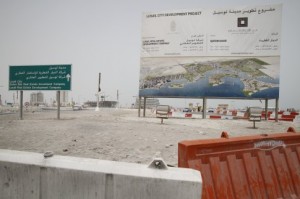
It’s not just the dust which is responsible for the white washed out sky, which was making it hard for me to get the clarity and contrasts I’m after with my photography. Visualize: a place with a white sandy ground, white washed walls in the center and white skies above. While the sun and clear blue skies may not be a regular siting, at least in the Spring, the weather is always warm.
I was told that as hot and muggy as it was in late April, that another month from now, I’d be screaming and begging for air conditioners and cool swims in the ocean. Top that off with the fact that they may only get two days of rain a year, and you have a pretty reliable climate at least for planning purposes. It certainly makes planning an outdoor wedding easy.
If you want to retreat inside, there are some interesting places to go. I was blown away by both the Modern Art Museum and the Museum of Islamic Art, the latter of which houses the largest collection of Islamic art in the world, collected from three continents. It includes manuscripts, textiles and ceramics and Islamic artifacts, with items originating in Spain, Egypt, Iran, Iraq, Turkey, India, and Central Asia.
The outside of the building is impressive as is the surrounding grounds, so much so that we ended up here on three separate occasions, including an afternoon picnic on the grass, which has a great view of boats parading by. While there was much to marvel at inside, the ceiling was also a decadent treat, especially for this art lover.
The Modern Art Museum had an exhibit by renowned contemporary Chinese artist Cai Guo-Qiang, whose work I fell in love with. Saraab showcased more than fifty works, including seventeen newly commissioned artwork. Some may argue that he isn’t a world class artist, but after spending a significant amount of time with his gunpowder drawings, I’d put him on the world class list. Awe inspiring, both his technique and his finished work.
I certainly wouldn’t fly all the way to Doha for shopping although it most certainly is a ‘shopping culture,’ focused on malls and as I mentioned, heavily influenced by the west. The Souq Waqif is a modern version of old town Jersualem or Casablanca. While they have tried to make the meandering market which extends down little alleys, look old, it’s clear that its a modern creation built for tourists, and yet it still has charm and great eateries, where you can find some tasty and authentic Moroccan, Lebanese and Indian cuisine. (Note that nearly everything in the Souq and many parts of the city close between 1 and 4 for their version of a Siesta).
The name, literally translated to “the standing market,” is crammed full of shops selling traditional materials, shawls, scarves, blankets, garments, and jewelry. You can also buy kitchen utensils, children’s shoes and clothes, spices, handicrafts, perfumes, and souvenirs, which are largely silver and gold incense holders, traditional thobes, ornate tea pots, wooden boxes decorated with etchings and paint, and hookah pipes for smoking shisha, a regular sighting in the Souq and beyond. It is very common to see men traditionally dressed in pairs or in larger groups at a restaurant or cafe smoking various flavors of shisha. And yes, of course we tried it although I couldn’t quite get the hang of it.
You put the tube in your mouth and suck away….the smoke is sucked down through the water and into your mouth and of course when you exhale, you get a thick cloud of sweet smelling smoke. We sampled apple, grape and strawberry flavors for kicks at a Moroccan restaurant named Tangine (a thumbs up) although there are many shisha lounges where you can just smoke and have tea if you have already eaten.
Bear in mind that at most restaurants and cafes, you can’t find alcohol so shisha is one way to seek pleasure without the accompanying wine and beer with a meal. Hotel bars have a liquor license but if you are a local living in Qatar, you have to apply for a license and then have a quota of how much you can buy at the one and only liquor store in the country, and that quota is based on how much you earn. Yes, really.
Lately, Souq Waqif has became a hotspot for art galleries and workshops, hosting several art galleries and events as well as local concerts during the holiday seasons. Also worth noting is Falcon Souq, just off Salwa Road, where you can see everything related to falconry. If you happen to be there from October to March (falcon season), you can see dozens of varieties of falcons or you can just go to view or buy falcon equipment such as burkha (hoods) and hubara (feathers).
And then there is camel racing season, which we apparently just missed. A friend who landed in Qatar earlier than I did, managed to take some of the festivities in – his image below. Helicopters apparently fly overhead the camels, broadcasting the races on TV. It’s apparently quite the spectacle as my expat friend also confirmed, who has been living in Qatar now for nearly two years.
While you can’t exactly go hiking in the mountains here, you can go to the beach, kayacking in the Mangroves (about an hour north) or dune bashing in the south (both of which we did). Refer to this video for a visual and audio experience of it.
If you have more time, I’d also take in the pearling villages of Al-Wakrah and Al-Wukair, the beaches near Mesaieed if you love to swim, Khor Al-Adaid near the Saudi Arabian border for some sand serenity and beauty, the fishing village of Al-Ruweis (not to mention numerous abandoned villages like Al-Khuwair and Al-Arish) and Jebel Jassassiyeh, where you can take in nearly 1,000 ancient rock carvings across 580 sites. Khor Al-Adaid and Jebel Jassassiyeh require 4WD and frankly, it’s worth getting one if you want to go anywhere interesting outside of Doha.
There are so many things to do and entice you in all directions and yet the country is so small. Qatar a mysterious land with a sprouting new city still trying to find itself. That said, it is trying hard and has the resources to do it. So while you may not be able to find a local Qatari upon landing or shortly thereafter and are miffed by the fact that you can’t take a jaunt out to a small town for some local flavor, give your visit a chance by digging a little deeper, staying a little longer and asking a few more questions.
There is substance below and beyond the glittering high rises, international hotel chains and modern stores and with Qatar’s growth and desire for “more of everything,” you’ll likely be hearing more about this little place that borders Saudi Arabia and United Arab Emirates to the north, and juts itself out in the warm and inviting Gulf.
For more on the Qatar and Doha journey, go here. Also check out my first impressions post and the Arab Modern Museum of Art Cai Guo Qiang exhibit. For an interesting post on the Murakami Ego exhibit, also in Doha, go here. For more on arts in general, go here. For great images and an overview on Doha’s Souq Waqif, go here.
Photo Credits:
Photo 2, both Skyskraper images & Villagio mall shot, Dunes 2: John Werner
Outside Tent Photo: Henri Laupmaa
Photo 1, Cranes, Dunes (1), Boat Shot w/haze, Birds on building: Javier Yunes
White/Black Robe Shots from Souq & Villagio Mall, Colorful houses along river, Construction site, Cai Guo-Qiang painting & Kayacks, Renee Blodgett
Camel Racing: Duncan Davidson
Education City: Education City
Islam Museum of Islamic Art – Museum of Islamic Art

Renee Blodgett is the founder of We Blog the World. The site combines the magic of an online culture and travel magazine with a global blog network and has contributors from every continent in the world. Having lived in 10 countries and explored nearly 80, she is an avid traveler, and a lover, observer and participant in cultural diversity.
She is also the CEO and founder of Magic Sauce Media, a new media services consultancy focused on viral marketing, social media, branding, events and PR. For over 20 years, she has helped companies from 12 countries get traction in the market. Known for her global and organic approach to product and corporate launches, Renee practices what she pitches and as an active user of social media, she helps clients navigate digital waters from around the world. Renee has been blogging for over 16 years and regularly writes on her personal blog Down the Avenue, Huffington Post, BlogHer, We Blog the World and other sites. She was ranked #12 Social Media Influencer by Forbes Magazine and is listed as a new media influencer and game changer on various sites and books on the new media revolution. In 2013, she was listed as the 6th most influential woman in social media by Forbes Magazine on a Top 20 List.
Her passion for art, storytelling and photography led to the launch of Magic Sauce Photography, which is a visual extension of her writing, the result of which has led to producing six photo books: Galapagos Islands, London, South Africa, Rome, Urbanization and Ecuador.
Renee is also the co-founder of Traveling Geeks, an initiative that brings entrepreneurs, thought leaders, bloggers, creators, curators and influencers to other countries to share and learn from peers, governments, corporations, and the general public in order to educate, share, evaluate, and promote innovative technologies.



